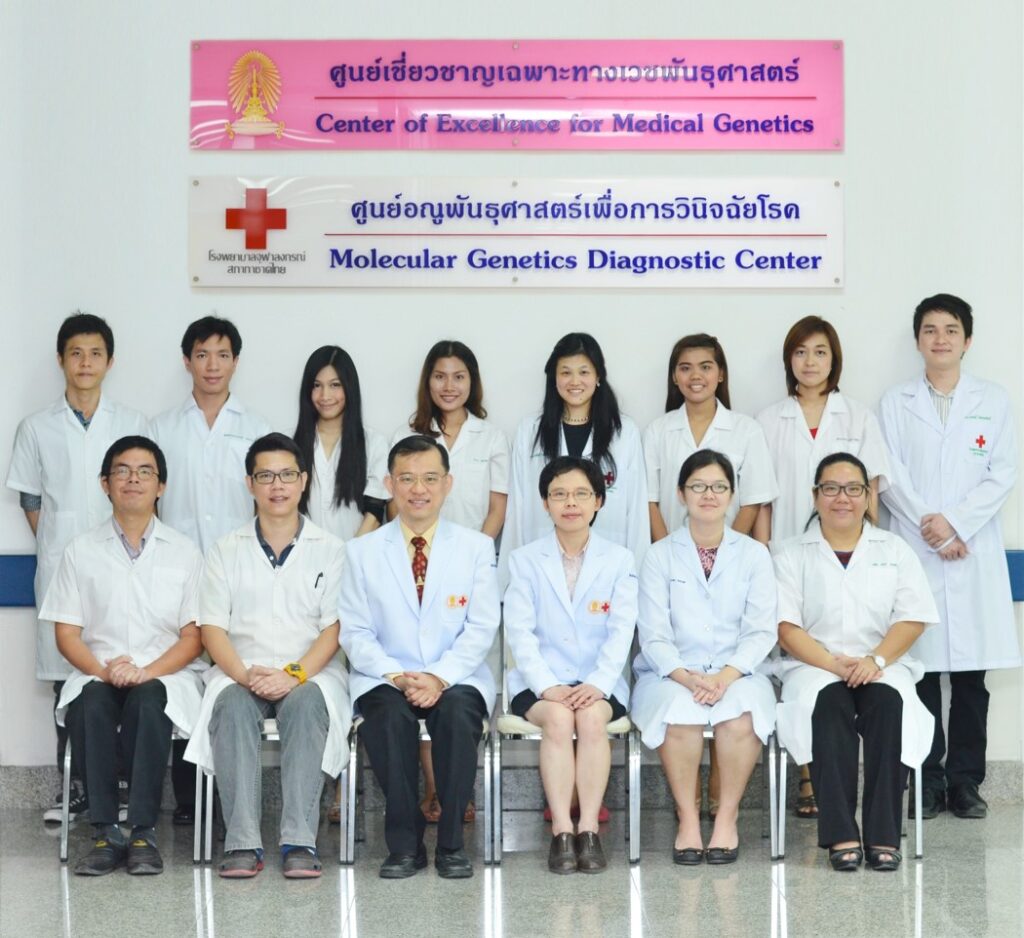Research Program/Genomics
Center of Excellence for Medical Genetics and Genomics (CEMGG)
Medical Genetics: From patients to developmental biology and back to clinical applications
The CEMGG receives research questions from routine daily clinical practice, ranging from “What is the diagnosis?” “What is my son’s prognosis?” “How to treat my child?” to “How can we prevent the disease to recur in our next children?”. With in-depth studies, the new body of knowledge gained in the CEMGG has been applied to benefit the patients, their families and other human beings. The research works are summarized below.
Research Highlights
1. Diagnosis. The CEMGG has developed and applied laboratory techniques to give definite diagnoses to key diseases, using molecular genetic techniques for mutation detection and validation of their pathogenicity. This has identified several mutations which had never been previously reported, and suggests the importance of key amino acid residues in the polypeptide chains. Common mutations in several diseases in the Thai populations were found, which enables diagnostic laboratory tests for screening for common mutations, instead of searching the whole gene for causative mutations. The identified mutations could also be used for prenatal diagnosis of the next pregnancies.
The CEMGG is the country’s leader in applying Next Generation Sequencing (NGS) technology to clinical practice (clinical genome and exome sequencing) and medical research. One of the CEMGG’s prominent works is the identification of germline and somatic DICER1 mutations in pituitary blastoma, which was published in the J Clin Endocrinol Metab (Impact Factor 6.31).
In addition to the molecular genetics techniques, the CEMGG uses biochemical methods, such as gas chromatography/mass spectrometry to diagnose inborn errors of metabolism.
2. Identification of the causative genes and study of their pathogenesis so as to better understand clinical manifestations, clinical courses and prognoses.
The CEMGG has identified or confirmed the etiologic roles of many disease genes, including those causing oral clefts. They hypothesized that genes causing dysmorphic syndromes might cause isolated birth defects, and vice versa. This hypothesis led to the identification of many genes involved in oral clefts, amastia and systemic lupus erythematosus. An outstanding work is the identification of MBTPS2 as a gene for X-linked osteogenesis imperfecta, published in Nature Communications (impact factor 11.5) and the identification of SATB2 as a gene for a novel dysmorphic syndrome, published in Human Mutation.
Regarding studies of mechanistic pathogenesis, the team has studied the pathomechanism of split hand/split foot malformation syndrome and found for the first time that the DLX5 and DLX6 genes in human osteoblasts are expressed only from the paternal alleles (maternal imprinted genes), published in Journal of Medical Genetics with an impact factor of 6.3.
3. Prognosis. One of the applications of pharmacogenetics and pharmacogenomics is to predict whether a patient would have severe adverse drug reactions to a certain medication. The CEMGG confirmed the association between carbamazepine-induced severe cutaneous reactions and HLA-B*1502 in the Thai population. This finding was published in Epilepsia in 2008 and has over 200 citations. They also studied drugs for HIV and leukemia, and found that the appropriate doses of some drugs for Thai patients should be different from Caucasians because of their different genetic composition.
4. Prevention and treatment. The CEMGG has studied and campaigned for the use of folic acid in reproductive aged women prior to conception to decrease the incidence of birth defects. When pregnant, the CEMGG can offer molecular genetic techniques for detection of the mutation run in that particular family. Via collaboration with other teams around the world, the CEMGG is developing genome editing techniques for gene therapy of diseases which can be cured by bone marrow transplantation without available donors.

Key Contact Person
Professor Vorasuk Shotelersuk
E-mail: vorasuk.s@chula.ac.th